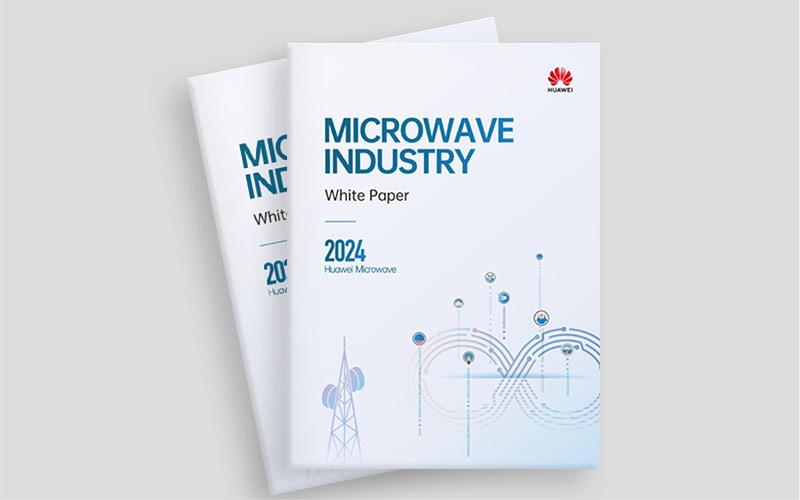Industry Trends
2023 Microwave Industry White Paper
In the 5.5G era, microwave will account for 60%+ of mobile backhaul solutions and strong demand will drive the microwave industry forward.

At the 2023 Global Microwave Industry Forum, Huawei officially released the 2023 Microwave Industry White Paper. In the 5.5G era, microwave will still act as an important medium for mobile backhaul, projected to contribute to more than 60% of mobile backhaul solutions. The long-term evolution, strong demands, and diversified applications of mobile backhaul are the biggest drivers for the sustainability of the microwave industry as well as its technical research.
Progress has been made in the research of microwave link KPIs. This will allow microwave to be used more efficiently for mobile backhaul to meet the capacity and quality requirements and to support its long-term development.
Featuring large capacity and low spectrum costs, as well as empowered with other technologies for long-distance transmission, high-density deployment, and higher spectral efficiency, E-band is a prime section of microwave in the next 10 years to support the backhaul evolution in 5.5G and beyond.
Traditional microwave bands are the key to 5G deployment in suburban areas, highlighting the need for multi-carrier backhaul solutions based on multi-TX and ultra-wideband technologies to meet the capacity needs.
Long-haul microwave plays a pivotal role in fiber-lacking areas. To meet the demand for over 20 Gbit/s capacity in these places, multi-band and multi-carrier aggregation is required to work around the insufficiency of spectrum. It is also necessary to address the tower loads and tower rents that increase exponentially in conventional long-haul solutions.
Microwave fronthaul technology allows rural sites to share baseband resources of existing base stations to provide ubiquitous coverage at ultra-low costs and power consumption. This helps connect hundreds of millions of people in remote areas who have no access to mobile broadband.
Energy saving and automation facilitate the development of the microwave industry. As the deployment of microwave backhaul scales up, automation is ideal for efficient microwave O&M. Microwave networks use incumbent mobile towers to build backhaul networks, and long-distance transmission to reduce the number of devices on networks, thereby expanding the applications of microwave networks.
Zeng Chuang, President of Huawei's Microwave Product Line, said, "5G is developing faster than people's expectations. 5.5G has moved from vision to standard formulation. In the process of ICT evolution towards 5.5G, next-generation microwave innovation has moved from last year's concept to reality this year. Huawei will continue to invest in microwave technologies and continue to innovate in the pursuit of ultimate cost-effective and high bandwidth, in-depth energy saving, low latency monetization, efficient delivery, and digital inclusion to provide better solutions for the 5G digital world."
- Tags:
- 5.5G
- White Paper





